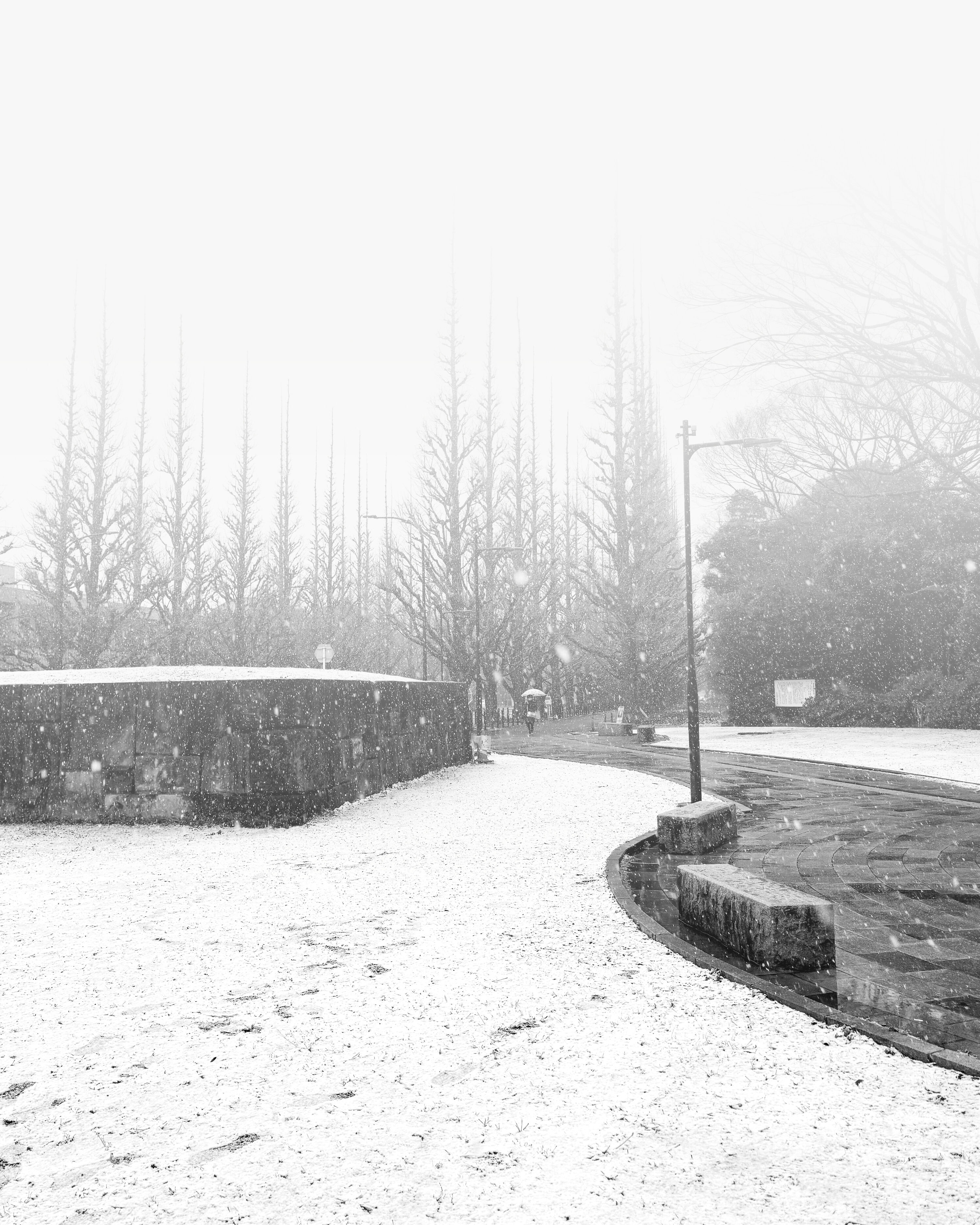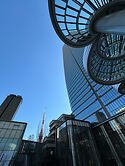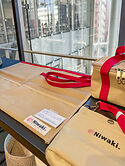Rishun* / 立春 in Tokyo
February might not be everyone’s idea of the best time to visit Japan, but when work calls, fearless Niwaki founder Jake Hobson slips on his travel Takumi work suit (with custom matching ripstop eye mask), tucks passport, an improving book and a camera into his Achi Kochi Tote and off he flies.
But it’s not all work, work, work: outside the R&D meetings and trade show Jake found time to indulge in a little tree spotting, and even made friends with a pig. Take 5 mins to live vicariously through a few photos and words from the trip.
If you’re not already doing so, why not follow us on Instagram for more updates of this kind? Main account is @niwaki.hq while Jake’s personal is @niwakijake.
Top tip: you can click any image in this story to enlarge it/see the whole picture, in case it looks cropped on your device.
The remarkable garden (and waterfall – pictured above) of the New Otani Hotel (opened 1964 so perhaps due a name change.) A great place to stay AND it’s the SPECTRE headquarters in You Only Live Twice.

A chilly Saturday morning in Tomigaya brought out a few oddities, of which Tokyo has so many. This old girl kept warm as her owner enjoyed a morning coffee.

If you don’t know how to do it, I’ll show you how to walk the…pig. I think they were on their way to Yoyogi park, where the rock and rollers hang out on the weekend. Since seeing this, I’ve discovered the whole ‘pig as household pet’ thing on Instagram.
Azabudai Hills is the latest upmarket shopping destination which opened to great fanfare before Christmas - swanky flats, the tallest building in Japan, and some serious retail, all close to another great landmark, Tokyo Tower. We dropped in to see the carefully curated Niwaki collection in the newly opened Conran Shop.
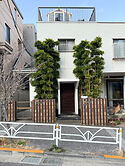
You’ll see bamboo in the gardens and countryside all over Japan, but it’s quite rare in small city gardens - and when it is used, it tends to be pruned like this, in the shopping district of Daikanyama.
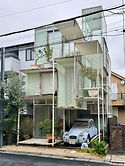
Sou Fujimoto’s masterpiece House Na, tucked away in Koenj, a district known for vintage clothing. It’s hard to imagine actually living there, but is fascinating to see it sitting in a regular street. Japan seems to have looser planning regulations than elsewhere, and it’s quite common to come across architect designed homes like this - although it could do with a lick of paint!
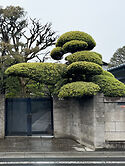
Out in the suburbs, a nicely shaped maki (Podcarpus macrophyylus) acts as a sort of gatekeeper, known as monkaburi**, welcoming you into the garden.
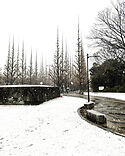
It snowed! The famous ginkgo avenue in Meiji Jingu (which looks spectacular in November, as we’ve seen before.) Japanese weather forecasts tend to be very accurate, and yes, they did say it would snow - but somehow it’s always a surprise and you’re never quite ready for it.
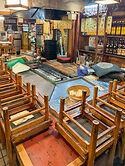
Izakayas, oh izakayas. One day we’ll get round to writing an entire article on them, but meanwhile, here’s one we found in Shimbashi, at closing time. Sort of a pub, but with tables and food, or a restaurant, with plenty of booze, something like Spanish tapas…Shimbashi, incidentally, is excellent for late night eating and drinking, of the slightly rough and ready type, and well worth investigating.
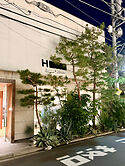
The telltale planting style of GreenSpace, an Osaka based landscape company, outside a shop in upmarket Ometosando. Pines, agaves, schlefflera and rhapsis palms, carefully pruned and thinned within their narrow planing bed. We’ve talked about their work at the Piece Hostel in Kyoto before, and they source plants from my old friends Furukawa Teijuen.
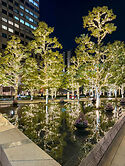
Winter is a great time to visit Tokyo (especially in the build up to Christmas when they follow the old mantra ‘if it grows, illuminate it’)
Although I suspect these evergreens are like this the whole year round.

I’ve got to say, although we packed meetings, some R&D, and a trade show into the trip, it wasn’t ALL hard work. Bar Bin in Ebisu took a bit of finding, tucked down a tiny alley backing onto railway tracks, entirely unsigned apart from one simple logo on the door, but with its Sengalese tunes and coriander mojitos, was well worth the effort.

Yoyogi park, shifting seasons. The yukitsuri snow protection, while essential in some parts of the country, is done more as a cultural symboliser in Tokyo, where snowfall is rarely heavy enough to damage the trained branches. It sure looks nice though, especially alongside early plum blossom.

One of my favourite trees in Japan, sarusuberi, Lagerstroemia indica, always look best in the winter with its gnarled, shiny bark (the Japanese name translates as ‘monkey can’t climb’) and who needs flowers anyway? Behind, are Zelkovas, a common Tokyo street and park tree.
*Rishun (立春) is the name of one of the 24 divisions of the Japanese calendar of the natural world, for the period 4-18 February, defined as the beginning of spring. There are some fun folk customs involving chucking beans at Oni (a devil) to keep bad luck away for the year, but that’s a story for another time. Each of the 24 divisions (sekki) is divided into 3 sub-divisions (kō ) each lasting approximately 5 days, giving 72 subdivisions in total. As I write this (14 Feb) we’re in 魚上氷 / Uo kōri o izuru which lasts until 18 Feb, during which time the fish are said to emerge from the ice, so keep your eyes peeled …
** monkaburi 門かぶり – welcome branches – literally translates as ‘gate crowning’ and looks a bit like the tree is trying put its arm around you.
